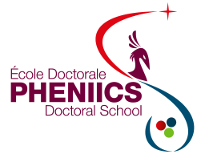Orateur
M.
Wenjia HUANG
(CSNSM (IN2P3-CNRS & UPS))
Description
Nuclear Masses are widely used in nuclear physics, astrophysics and in advanced applications such as nuclear energy and waste management. However only about 2800 of the nuclear masses have been experimentally determined for the moment, while 6000-7000 nuclei have been estimated to exist in the Chart of Nuclides. In nuclear astrophysics, the nuclear mass is an important input for nucleosynthesis network calculation, which yields the final element abundances and energy generation rates. There are several techniques that allow high precision mass measurements, but the most precise are those carried out using modern Penning Traps, where resolutions of 107 and precisions better than 10-10 have been obtained. Other modern methods include storage rings like those at GSI and at IMP-Lanzhou, or multi-reflection time-of-flight technique at Cern and at Riken.
The Atomic Mass Evaluation (AME) is the most reliable source for comprehensive information related to the atomic masses. It provides the best values for the atomic masses and their associated uncertainties by evaluating all available experimental data from radioactive decays, nuclear reactions and direct mass measurements using a weighted, least-squares approach. The particularity of the AME is that any mass measurement basically establishes a relation between two or more nuclides, and given that a single nuclide can enter measurements using different techniques, this leads to a network of connections amongst nuclides.
In this presentation, different techniques for nuclear mass measurements will be illustrated and the philosophy of AME will be introduced.
Auteur principal
M.
Wenjia HUANG
(CSNSM (IN2P3-CNRS & UPS))



